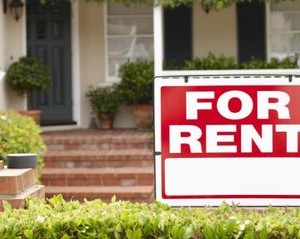- 4 Unexpected Things I’ve Learned From Buying My First Mobile Home Park
- How Ironic: America’s Rent-Controlled Cities Are Its Least Affordable
- U.S. homes are still a bargain on the international market
- Getting The Best Possible Quality Photos On MLSs and Syndicated Sites
- Home buyers in these markets have the upper hand
Investing in Rentals as a Complete Beginner

It may be common knowledge that buying rental property can be one of the most secure and fastest ways to build serious wealth – but the “how to” knowledge is not so common. The steps to buying rental property, however, are not that drastically different from buying your own home, with a few important differences. This article is going to explain step by step how to buy a rental property and begin your entrance into real estate investing.
 (Before I get too deep in this post, I want to invite you to download our book “The Ultimate Beginner’s Guide to Real Estate Investing” which will help you build a solid foundation for your financial future. In other words – you are going to learn exactly how to get started building wealth with real estate! To get the book, just click here and join BiggerPockets, the free real estate investing social network!)
(Before I get too deep in this post, I want to invite you to download our book “The Ultimate Beginner’s Guide to Real Estate Investing” which will help you build a solid foundation for your financial future. In other words – you are going to learn exactly how to get started building wealth with real estate! To get the book, just click here and join BiggerPockets, the free real estate investing social network!)
Step One: Do Your Homework Before Buying Rental Property
Please – please don’t skip this step. As soon as you’ve made your decision that you want to buy rental property, it can be easy to start shopping for homes and picking out the paint colors. However, your first step begins long before ever stepping foot into a house.
Doing your homework ahead of time means researching:
- What kind of investment property you want to buy
- How much you can afford to pay
- What kind of neighborhood you want to invest in
- What the average rent is in your area
- What kind of return on investment you hope to make.
Doing your homework can be difficult for one major reason: You don’t always know what questions to ask. Because of this, BiggerPockets recently created the free “Ultimate Beginner’s Guide to Real Estate Investing” which will help any new investor learn how to get started. This guide will help teach you the necessary questions to ask.
Step Two: Make a Plan and Develop Criteria
Once you’ve done your initial homework, you can begin making a plan and setting your criteria. I highly recommend you write down your plan and goals, and refer back to them often. If you are looking to buy a single family home for between $150,000 and $200,000 – it’s easy to get distracted by the home with the beautiful garden for $250,000. By stating your plan and your criteria, you can hold yourself accountable to your goals.
Step Three: Arrange Financing
One of the most common mistakes made by homebuyers is to start searching before arranging financing. However, this error has caused untold heartache when buyers find they can’t afford the dream home they’ve found. This same principle applies to buying rental properties. Before shopping for your new rental property, be sure to talk with a bank about how much you can afford to buy. There are numerous different paths to real estate financing so be sure to weigh all your financing options before making your choices.
Step Four: Begin Shopping For a Rental Property
Now comes the exciting part! There are a lot of great ways that you can get find rental property. Begin by looking online at your local MLS to see what’s available. There are several websites you can use to find the listings, such as:
Each of these sites search generally the same MLS listings, which all real estate agents have access to. However, these sites do not contain all the information needed (and sometimes do not even contain all the listings, either.) For this reason, it’s important to get in touch with a local real estate agent that you can trust to get you more information. An agent is generally only paid, by the seller, when you purchase the home – so for a home buyer, using an agent is typically free.
It’s often helpful to find an agent who specializes in working with investors, as they are more keenly aware of what makes a good rental property. Also – be sure to share your criteria (See step two above) for your rental property, and allow your agent to help you find the best properties that meet your qualifications.
Step Five: Make Your Offer
When you find a rental property you want to pursue, and have walked through it, your next step is to make your offer. To do this, your real estate agent will fill out the paperwork based on your requests and submit your offer to the selling agent. The selling agent will bring your offer to the seller, and negotiations will begin. For a great article on negotiations, check out How to Negotiate: 7 Real Estate Negotiation Tips.
Be sure to only spend the amount that makes the most sense to you. Determine how much cashflow you need to make and don’t let emotion override the numbers. Be willing to walk away and you’ll always hold the upper hand in the negotiations. If you can’t agree to a number that works for you – it’s not worth buying. Remember:
It’s better to have no deal than a bad deal. (Tweet This Quote!)
Also remember, price is not the only consideration. Depending on the popularity of the property and the strength of the deal, there are many other issues to include in your offer, including:
- Closing date
- Inspection contingency
- Financing contingency
- Seller financial concessions
- and more
These items are all important to discuss and decide if you will include in your offer. Be sure to talk with your real estate agent about all the necessary parts of the offer. Once you have a signed agreement with the seller and have agreed upon all terms, you now have what is known as “Mutual Acceptance.”
Step Six: Due Diligence
You’ve finally agreed on a price and you have a closing date set. Now, it’s time to begin your “due diligence.” During this period (according to the dates specified in your offer) you will hire an inspector to perform an condition inspection on the property, looking for any defects that may cost you money in the future. If something is found, you can always go back and re-negotiate with the bank (as long as it is within your “inspection contingency” timeline, as specified in your offer.)
If you are buying in a “hot market” it may not be wise to nickel-and-dime the seller, or they may refuse to perform the steps and walk from the deal, giving it to someone else. On the other hand, it’s important that you don’t get stuck with a property that has major problems – so be sure to weigh the decisions carefully and keep your goals in mind at all times.
During this time between “mutual acceptance” and closing – you will also finalize the financial arrangements with your bank or other lender. This is also the time when the Title Company or Attorney, depending on your local customs, will take over facilitating the transaction. When the day of closing comes, you will sign documents and will be given keys to your new rental property.
Step Seven: Start Landlording
Finally, the deal has closed and you are now a landlord! If the property is vacant, you will need to learn how to rent your house (be sure check out How to Rent Your House: The Definitive Step by Step Guide” here on BiggerPockets.




 100% Secure
100% Secure
You must be logged in to post a comment Login